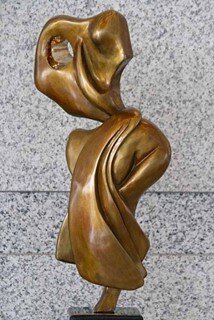Selecting art for your home can be challenging. After selecting the pieces that appeal to you most, you’ll need to consider how they will fit with the rest of your home’s interior design, and how to exhibit it in the best way possible.
Make sure to keep size in mind when selecting a sculpture – A sculpture that is too large may overwhelm the area, and if too small, could go unnoticed. Find an appropriate space for the sculpture, and determine the size sculpture that would fit best. Make sure it will not reside too close to another piece of art to avoid overcrowding.
Keep color in mind when selecting your art, too. If you’re in a room with brown walls, a bronze sculpture may not go as noticed as it would in a white-walled room.
If you feel none of the rooms in your home are suiting your new piece of art, try making some changes. Something as simple as removing some decorative wallpaper or rearranging furniture could be all you need to accommodate your sculpture. It could take some work, but the effort will be well worth enjoying your new piece of art.
Jean Jacques Porret is a proud artist known for his breath-taking metal sculptures, and is honored when you consider his work to be part of your home or office. To learn more, contact J. J. Porret today.

